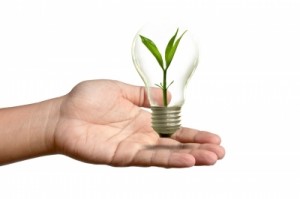 Although industrialization is something we cannot compromise on, taking a few measures to help our environment by reducing our carbon footprint is something we can do. Replacing normal lights with Industrial LED Lighting is one measure we can take. Many people are beginning to take additional steps to protect our environment and natural resources as they become more aware of the impact we have on them.
Although industrialization is something we cannot compromise on, taking a few measures to help our environment by reducing our carbon footprint is something we can do. Replacing normal lights with Industrial LED Lighting is one measure we can take. Many people are beginning to take additional steps to protect our environment and natural resources as they become more aware of the impact we have on them.
Lasts Longer and Uses Less Energy
LED lighting lasts over 20 times longer and consumes much less energy than other lighting sources like high-intensity discharge lights and incandescent. LEDs offer as much as 60,000 hours in lifespan whereas you only receive 1500 hours with the incandescent bulbs. Typically you can use a LED light for around 7 years before you need to replace it. They last, on average, over 10 times longer than compact fluorescent bulbs and almost 133 times longer than your normal incandescent bulbs. Maintenance and long-term operating costs are reduced significantly with industrial LED lighting when compared to the regular fluorescent and incandescent tubes.
The US Department of Energy states that using LED lighting offers far more energy savings in the US. In fact, they anticipate that by the year 2027, the use of LEDS could end up saving around 348 terawatt hours of electricity versus not using them and save as much as $30 billion in electricity costs.
Less Lights Needed
LED lighting focuses light in a single direction and offers better light distribution than the other lighting types which emit light in every direction, wastes energy and in most cases, illuminates areas where no light is needed like the ceiling, for example. This means, you get the same level of brightness as you would with incandescent and fluorescent lights but with fewer lights. By reducing how many lights you actually use, you reduce energy consumption and this helps the environment.
Impact on Sustainability
As more advantages become apparent, more businesses are choosing green lighting and sustainable design. There is much more attention being given to today’s environmental issues. More benefits are being offered to companies the make that effort to work in a sustainable atmosphere, as the requirement for sustainable design continues to grow. Accreditations like the Leadership in Energy and Environmental Design (LEED) are now offering companies guidelines of what is required to create an eco-friendly and sustainable building. Companies and buildings that are able to obtain this LEED accreditation are offered with many different local and state government incentives like tax breaks. Energy consumption is a big category in being considered for LEED accreditation.
